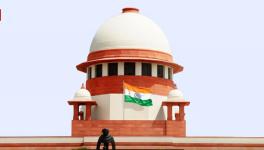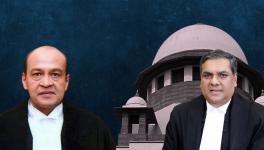Aadhaar is Creeping Back Despite Supreme Court’s Judgement

It has been around two months since a five-judge bench of the Supreme Court determined the fate of the Aadhaar project. The majority judgement did not receive much enthusiasm as it only limited Aadhaar’s use, rather than strike it down entirely. The two aspects that emerged from the judgement were that first, Aadhaar can be made mandatory only for subsidies, benefits or services, and Aadhaar authentication cannot be carried out by private entities.
Aadhaar’s Continued Existence
One of the biggest criticisms of the Aadhaar judgement is that not much notice was taken of the negative consequences of upholding section 7 of the Aadhaar Act. This provision allows Aadhaar to be used for availing subsidies, benefits and services, which citizens are entitled to. The reasoning provided is that it will cut-out ghost beneficiaries and fraud which will result in savings.
However, the petitioners had repeatedly argued against this provision since the technology is not free from issues and hence false negatives can result in exclusion from entitlements. In September 2017, 11-year-old Santoshi Kumari died of hunger in Jharkhand. The reason was due to her family not linking their ration card with Aadhaar, they did not receive the foodgrains they were entitled to. On November 11, 2018, Kaleshwar Soren died of starvation. Once again, the culprit was non-possession of Aadhaar card. He had managed to survive on his neighbours’ charity after his ration card was cancelled in 2016.
Also Read | In the Absence of Aadhaar, Starvation Deaths Continue in Jharkhand
The Economic Times reported today that Aadhaar enrolments, as well as authentications, had fallen drastically. However, this does not reveal much information about Aadhaar’s continued use. First, the drop in enrolment could be explained as many people in the country have already been coerced into getting an Aadhaar card before the Supreme Court decided on the matter. On the other side, the drop in authentication requests can also be one explanation as the use of Aadhaar for authentication has been made optional, hence rather than having to play with biometrics, people may prefer to submit or use other documents.
Following the Supreme Court’s judgement, the Unique Identification Authority of India (UIDAI) has issued two press releases in connection to it. The first press release welcomed the Supreme Court’s decision to uphold Aadhaar’s constitutional validity, the other concerned the electronic-Know Your Customer (e-KYC) norms. In the second press release, the UIDAI along with the Department of Telecommunications (DoT) stated that SIM cards linked with Aadhaar would not be deleted, as some rumours suggested. The release also mentioned that one could de-link one’s Aadhaar card by submitting a request for de-linking accompanied by an alternative identity document for fulfilling the e-KYC requirements.
However, Aadhaar continues to be of value to banks and telecommunications operators since no opt-out procedure has been devised till date. In a letter to the National Payments Corporation of India (NPCI) on November 19, the State Bank of India (SBI), in the light of the Aadhaar judgement, had decided to suspend the Aadhaar enabled Payment System (AePS). However, the UIDAI – the agency overseeing Aadhaar and its implementation – on November 30, informed the banks through a circular to the Reserve Bank of India (RBI), that since it is not possible to distinguish between authentication requests for the purposes listed under section 7, suspending the AePS would have an adverse impact. This circular would certainly be music to the ears of those operating the AePS, Bhim App as well as Aadhaar Pay, not to mention the numerous other corporate beneficiaries of Aadhaar.
Also Read | Aadhaar-Voter ID Linking May Have Disenfranchised Millions
Protecting the Financial Technology Companies
Barely a day after the Supreme Court had delivered its decision, the Union Finance Minister, Arun Jaitley, and the Union Minister for Electronics and Information Technology as well as Law and Justice, Ravishankar Prasad, said that the Supreme Court’s reading down of section 57 related only to contracts. In this regard, the Ministers are correct. But this is the letter, not the spirit of the Supreme Court’s decision.
Section 57 states that: “Nothing contained in this Act shall prevent the use of Aadhaar number for establishing the identity of an individual for any purpose, whether by the State or any body corporate or person, pursuant to any law, for the time being in force, or any contract to this effect:
Provided that the use of Aadhaar number under this section shall be subject to the procedure and obligations under section 8 and Chapter VI.”
Due to the blank cheque nature of this provision wherein Aadhaar can be used for ‘any purpose’ and by ‘the State or any body corporate or person’, the Supreme Court held:
“We read down this provision to mean that such a purpose has to be backed by law. Further, whenever any such “law” is made, it would be subject to judicial scrutiny. (b) Such purpose is not limited pursuant to any law alone but can be done pursuant to ‘any contract to this effect’ as well. This is clearly impermissible as a contractual provision is not backed by a law and, therefore, first requirement of proportionality test is not met. (c) Apart from authorising the State, even ‘any body corporate or person’ is authorised to avail authentication services which can be on the basis of purported agreement between an individual and such body corporate or person. Even if we presume that legislature did not intend so, the impact of the aforesaid features would be to enable commercial exploitation of an individual biometric and demographic information by the private entities. Thus, this part of the provision which enables body corporate and individuals also to seek authentication, that too on the basis of a contract between the individual and such body corporate or person, would impinge upon the right to privacy of such individuals. This part of the section, thus, is declared unconstitutional.”
However, there appears to be a loophole in this part of the Supreme Court’s decision, i.e. that the use of Aadhar has to be backed by a law. Under clause 3 of Article 13 of the Constitution, law is defined as including; “any Ordinance, order, bye law, rule, regulation, notification, custom or usages having in the territory of India the force of law”. Therefore, a departmental notification requiring the use of Aadhaar for any purpose would still not fall foul of the Supreme Court’s decision on section 57. The only saving grace is that the law is subject to judicial review, hence any formal iteration making Aadhaar mandatory can be challenged before the Courts. However, this depends on whether the general public is vigilant enough.
Also Read | One India, One Identity; Where Only Numbers Are Unique
The actions of the UIDAI, as well as statements from the government regarding section 57, appear to be geared towards ensuring the continued existence of fintech companies. While the ongoing Assembly elections along with the rhetoric around the Ram Mandir and the Citizenship Bill grab people’s attention, the Monsoon Session of Parliament could see the passage of a Bill to enable Aadhaar’s use for digital payments. It is not necessary to state who the true beneficiaries of such a law would be.
Get the latest reports & analysis with people's perspective on Protests, movements & deep analytical videos, discussions of the current affairs in your Telegram app. Subscribe to NewsClick's Telegram channel & get Real-Time updates on stories, as they get published on our website.
























